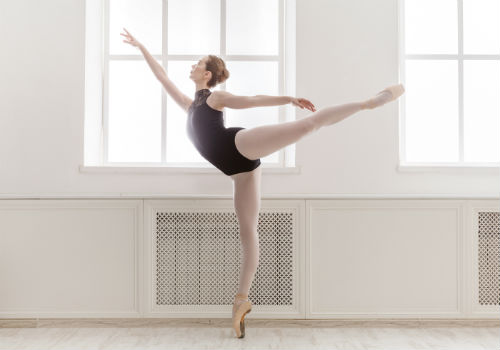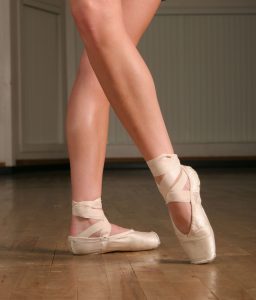A common problem in many ballet dancers is lower back pain. This pain is attributed to poor form or posture and improper technique.
Certain body types are more adaptable to the demands of classical ballet training. Even people with these adaptable bodies experience pain due to hyperextension or their inability to properly hold a position. Those whose physiques are less ideal for ballet experience higher levels of discomfort and are at serious risk of a lower back injury, which could require lower back pain treatment.
Improper Technique on the Hip Joint
While body type helps, more important is the technique involved. Performing incorrect movements can cause serious issues for ballet dancers. Arabesque is a very particular classical ballet position in which the body is supported by one leg while the other is hyperextended behind the body. Dancers whose bodies cannot naturally move this way mimic arabesque by putting unnecessary stress on the rotator cuff of the hip, multiplying the experience of pain in the lower back. This pain is because, to achieve the proper form, they exaggerate the movement by lifting and rotating their hyperextended leg, rather than extending the leg.
Not only is physique a deciding factor in injury susceptibility, but gender is also. Male dancers’ bodies are more predisposed to injury and strain due to their natural lack of flexibility in comparison to the female dancer. Men are more likely to exaggerate movements such as arabesques, which puts a higher strain on their lower back muscles. While females suffer this issue as well, their backs are usually more flexible and adapted to the demands of ballet posture.

How Classical Training Affects the Spine
Tremendous stress is placed on the lumbar spine in all movements in which the leg extends backward because of the hyperextension. If the lower spine or the lumbar spine is not strong enough to support this movement, lower back pain is imminent.
The lumbar spine is attached to the hip joint, so these two work together to create the proper arabesque. The lumbar spine is curved during arabesque to make room for the extended leg. If the lumbar spine is curved incorrectly due to either a limitation in flexibility or improperly learned technique, lower back pain is intensified.
Ways to Prevent Injury?
- Physical Training
A study investigating the leading causes of injury in ballet dancers showed that lack of physical training is a major cause for injury in dancers. It is crucial that dancers receive proper fitness training to strengthen their bodies and reduce the likelihood of an injury.
Upper body strength is also crucial because muscle weakness has shown to be predictive of later injuries in dancers. Sometimes dancers were never properly trained to meet the physical demands of dance, and so 6-week circuit-training programs can be used to improve their strength and endurance.

- Proper Nutrition and Rest
Dancers are at higher risk for injury if they are not abiding by a healthy, nutritious diet. Rest also plays an important role because dancers are more likely to perform improper movements and increase the chances of injury.
Dancers are at a higher risk of developing body dysmorphic disorders such as anorexia and other eating disorders, due to the stress placed on their body type and physique. These disorders emerge because of the expectation to maintain a low percentage of body fat, be petite, and stay incredibly fit. To maintain this figure, dancers are likely to be controlling their diets to achieve a certain aesthetic. Health professionals encourage a healthy, nutritious, and sustainable diet because poor nutrition increases the likelihood of a dancer to sustain an injury and stunts growth.
Dancers follow strict schedules and are allowed a few breaks throughout the day. According to a study, most of the dancers involved in the study had less than an hours’ worth of rest during a typical day. Their schedule includes long dance classes, many rehearsals, and little time left over for leisure.
Due to the number of hours they spend dedicated to dance, dancers are often exhausted. Since they cannot rest during the day, dancers need to be sure to sleep well at night. Without enough sleep, dancers cannot practice or perform properly, furthering their risk of injury.
Ballet dancers should engage in strength training, get plenty of rest, and follow healthy nutritious diets to stay healthy and fit.
Injuries are commonly sustained due to performance in improper form. Dancers must be careful to perform with correct posture as to avoid sustaining a career-threatening injury.



